With The Suicide Squad out this week, FVL gives much-deserved props to John Ostrander…
—
By FRED VAN LENTE
Greetings, back issue bombardiers! This week premieres The Suicide Squad, director James Gunn’s follow-up to David Ayer’s 2016 extended music video with supervillains. That auspicious event seemed like the perfect excuse to re-read one of my favorite series from when I was a lad, the Suicide Squad as spearheaded (largely) by writer John Ostrander, whom in a very nice turn, can be seen in Gunn’s movie. (You can even see him in one of the trailers, injecting Idris Elba with murderous nanites.)
The obvious inspiration for the original series is the Robert Aldrich-directed action classic The Dirty Dozen (1967) — available, you lucky dogs, like TSS, on HBOMax, so might I suggest a streaming double-feature? There, Lee Marvin leads an all-star cast of convicted soldiers on a long-shot raid against a chateau full of Nazi officers and their girlfriends on the eve of D-Day. Since this ridiculously impossible mission has a high chance of total failure, the brass springs a band of murders, rapists and thieves from military prison to do it in exchange for amnesty.
I loved this flick as a kid (clearly I was a disturbed child) and when I saw Howard Chaykin’s amazing cover for Suicide Squad #1, I instantly intuited how it could be applied to supervillains. It was love at first issue.
Here’re my TOP 13 favorite original Suicide Squad stories, every one plotted or (co-)scripted by Ostrander himself. Enjoy!
In chronological order…
—
1. Legends #3: Send For… the Suicide Squad! A sort of dry-run for Marvel’s two-decades-later Civil War, Darkseid uses Glorious Godfrey’s mob-whipping abilities to turn Earth against its heroes in this sprawling crossover plotted by Ostrander, having recently joined DC from First Comics. Heroes being on the outs gives ruthless government bureaucrat Amanda Waller the opening to trot her Dirty Half-Dozen out to take on the Apokoliptan fire-monster, Brimstone.
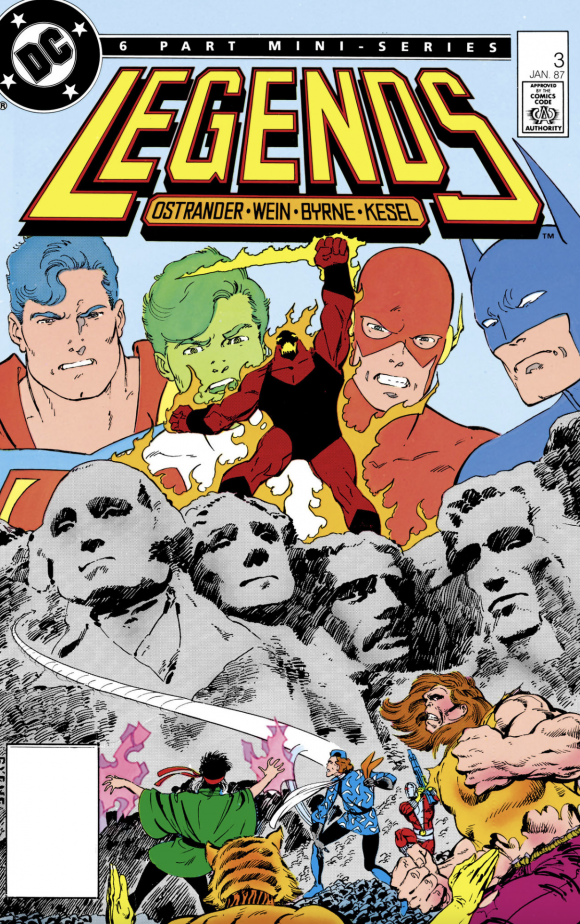
One of the standouts of The Dirty Dozen is John Cassavetes’ drafted Mafia hood Franko, who is always complaining, working on side hustles, and defying Lee Marvin’s authority. The Franko figure here is Captain Boomerang, who, luckily for Ostrander, was free for Squad duty when the creators of the post-Legends Wally West-starring Flash series cut loose all of Barry Allen’s beloved rogues.
Hilariously, his sentence commuted for helping defeat Brimstone, Boomerang immediately starts committing crimes the very next issue of Legends. He gets captured by Glorious Godfrey’s mob, forcing Task Force X to go rescue him lest he expose their existence to the world. Despite writers laying on his Australian accent with what I like to call “Claremontian Density,” Boomerang’s inclination to stab everyone and their mother in the back makes him one of the Squad’s most entertaining members. (Sadly, early on, Ostrander decides to have Amanda Waller call him “Boomerbutt” every issue, which, let me tell you, never gets any funnier.)
—
2. Secret Origins #14: The Secret Origin of the Suicide Squad! Lee Marvin’s Major Reisman, commander of the Dirty Dozen, is a no-nonsense soldier who got stuck with this chickenshit detail by pissing off the much-nonsense brass one too many times. Somehow, he’s even scarier than the psychos under his command…
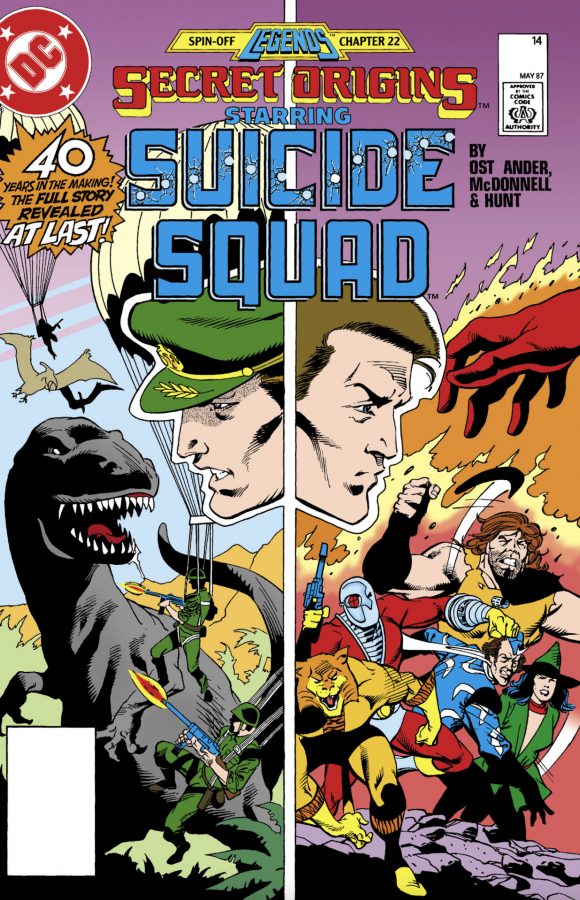
… just like Col. Rick Flag, field commander of the Suicide Squad, whose Really-Kind-of-Public Origin is told here, along with his civilian counterpart’s. Amanda Waller’s origin involves her determination to escape the crime-ridden projects of Chicago after losing her son, son-in-law, and husband to gun violence.
Flag’s origin involves his guilt over letting his O.G. Suicide Squad teammates get torn apart by a crazed yeti, after his father died heroically slamming his fighter plane into a giant Nazi wheel.
This is why I love superhero comics. They are equal parts sublime and completely stupid.
—
3. Suicide Squad #2: Trial By Blood. Like the Dirty Dozen, the Squad’s first (official) mission involves an assault on a secluded mountain fortress, in this instance the hideout of The Jihad, a very un-PC band of super-powered terrorists-for-hire that would never, under any circumstances, get created today (not that I’m complaining). Both missions go FUBAR almost immediately. In the Squad’s case, one of their own, Plastique, tries to defect; and Boomerang lets another, Mindboggler, get killed because she humiliated him earlier; their escape route is cut off, so they have a desperate fight to escape. The action is brutal and thrilling: if only every superhero series could open as strong as this two-parter.
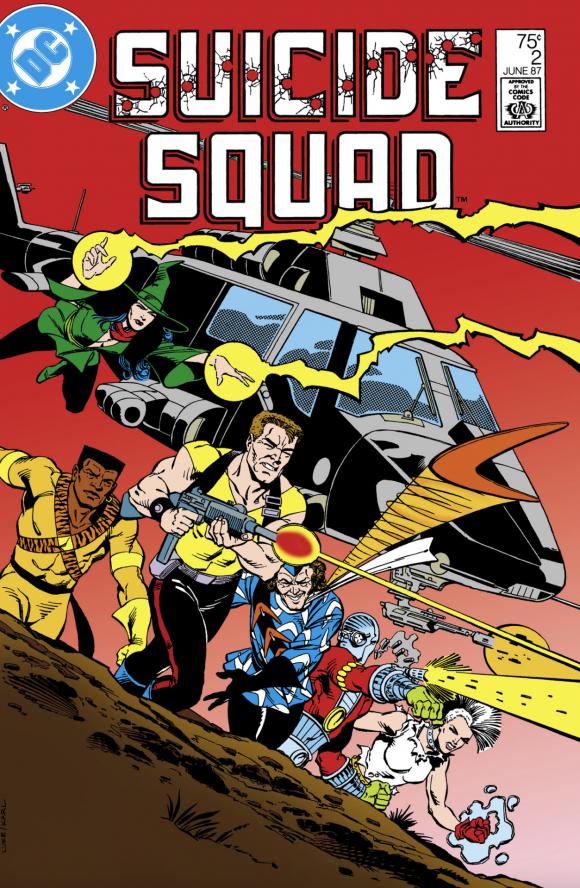
—
4. Suicide Squad #6: Hitting the Fan. Ostrander was unusually fond of Reagan-era Cold War shenanigans, but they did fuel some of his best stories. For once the DC brass let him use an actual A-list toys-have-been-made-of-me supervillain, the Penguin, and sets him up deftly as a master criminal strategist as well as a world-class bitcher. A tense undercover mission to smuggle out a dissident Soviet writer goes pear-shaped when Flag & co. discover nobody actually asked the writer if she wanted to be rescued. Its cover blown, the Squad has to fan out across Siberia to escape the Red Army.
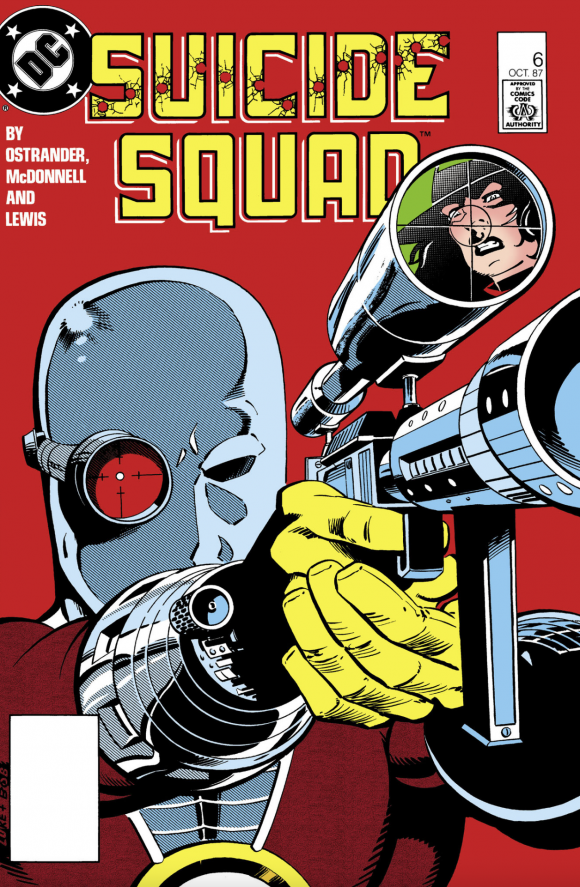
—
5. Firestorm the Nuclear Man Annual #5: Ground Zero. If you were somewhat baffled by the inordinate number of second-tier Firestorm villains on the Squad in both comics and movies (Slipknot? Weasel? Really?), the obvious explanation is that Ostrander was writing Firestorm too, and in reading old issues of the Nuclear Man’s title discovered a treasure trove of usefully expendable super-crooks.
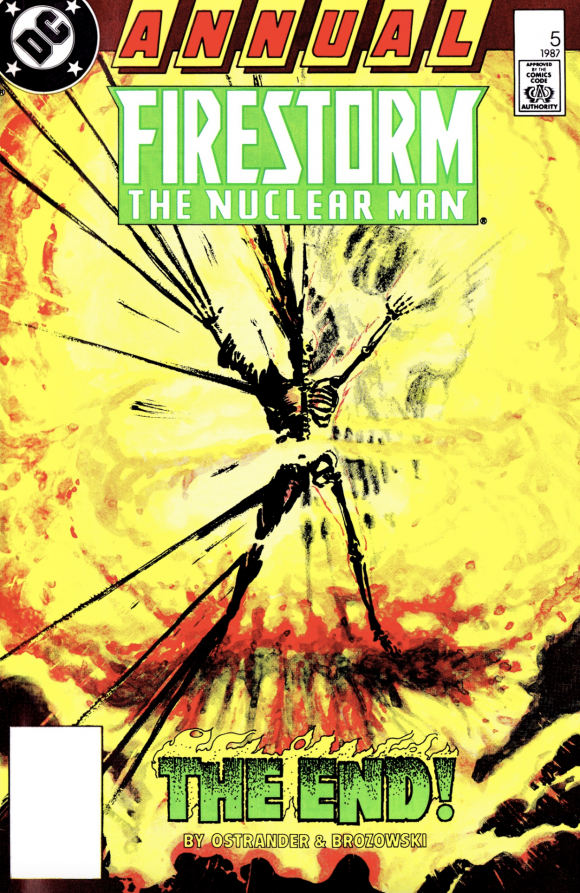
Ostrander brilliantly throws down the gauntlet of his Firestorm run by giving Professor Stein cancer and having him convince Ronnie Raymond, the Nuclear Man’s other half, to go on a Quest for Peace to destroy the world’s nuclear arsenal. This inspires the US government to send in the Suicide Squad, augmented by Flamehead’s rogues’ gallery of Killer Frost, Multiplex and (post-Crisis) Parasite. Parasite goes kill-crazy, forcing the Justice League to intervene, which sets up the delicious conundrum of Rick Flag having to capture his own Squad so he doesn’t blow his cover in front of Batman.
—
6. Suicide Squad #10: Up Against the Wall. Batman discovers the existence of the Suicide Squad anyway, and he is none too happy about it. He infiltrates Belle Reve Prison as an incarcerated Matches Malone and grabs all of Task Force X’s files, but then gets discovered and has to fight his way out. It would have worked, too, if it weren’t for that meddling Amanda Waller, who points out that by not wearing gloves as Matches they now have Batman’s fingerprints all over his cell. If he exposes Task Force X, she’ll expose him.
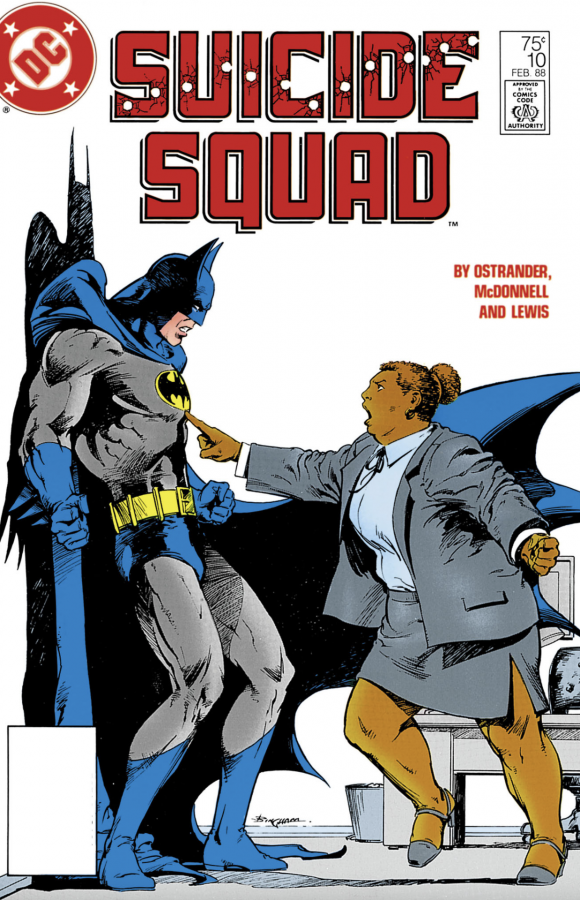
Post-Grant Morrison, Batman’s superpower is “I Thought of That,” so he would have been wearing phony prints over his fingers or something. But 1988 Batman is still semi-human and Waller gets a clean W.
Amanda Waller, a non-super-powered master strategist, and a large Black woman who goes toe-to-toe with the DC superheroes and, more than often not, comes out on top, is, as has been often said, the standout character of Suicide Squad and has few comparisons in other media (Ernest Borgnine in The Dirty Dozen doesn’t count).
—
7. The Doom Patrol and Suicide Squad Special: Red Pawn. James Gunn must be a fan of my fellow 13th Dimension columnist Paul Kupperberg, because to my knowledge Thinker and Weasel show up on the Suicide Squad only twice: in Gunn’s The Suicide Squad (2021) and in this Ostrander-plotted, Kupperberg-scripted one-shot, where they rather spectacularly murder each other. Dumbass superhero Hawk has gotten captured by the Sandinistas while running guns to Contra rebels. Two competing American spy agencies send the Squad and the Patrol to Nicaragua to save him without bothering to tell the other. Ostrander’s plots specialize in missions that go totally FUBAR, and when the USSR’s Red Rocket Brigade shows up to defend the prison, this one’s no different. Ostrander and Kupperberg make a great team, and Erik Larsen shows off a mastery at storytelling even at this young age.

—
8. Suicide Squad #12: Blood & Snow, Part Two. Telly Savalas steals the show in The Dirty Dozen as Bible-quoting racist serial killer AJ Maggot, who, the minute they infiltrate the Nazi chateau, stabs to death the first blonde he finds and tries to kill Jim Brown.
The Enchantress is the Maggot of the Squad, and after nearly going crazy and trying to kill everybody every time she appears, finally does go full David Ayer here during a commando raid by the Squad on a cocaine kingpin’s compound… led by, of course, Speedy, the DCU’s expert on all things drugs, apparently.
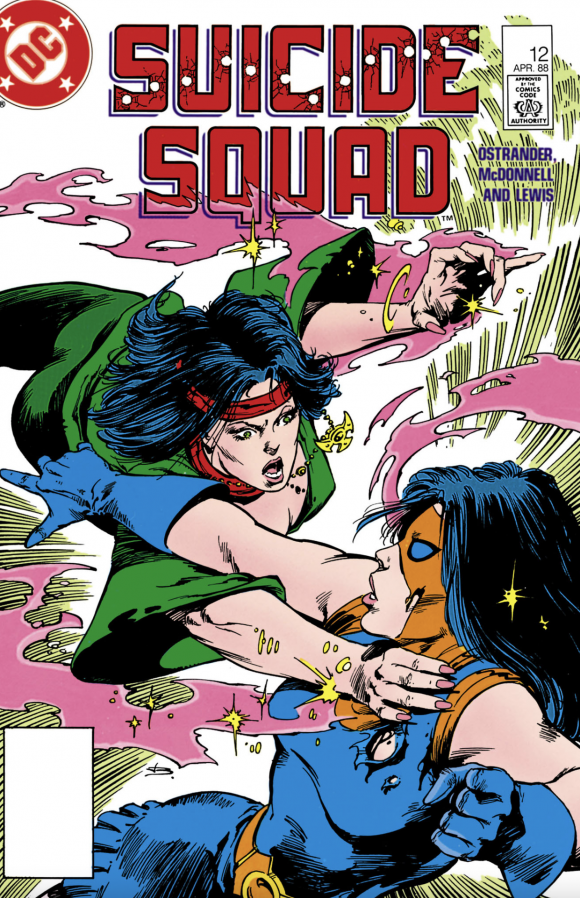
She has to be taken down by teammate Nightshade, an obscure Charlton hero (and not, according to Alan Moore, the inspiration for Silk Spectre) that has rarely been used better before or since.
Just as the Dirty Dozen had MP Sergeant Bowren (Richard Jaeckel) tagging along as authority babysitter, the Squad has also traditionally included a motley collection of lower-tier heroes like Vixen, Shade the Changing Man, Nemesis and the aforementioned Nightshade. …Though on Twitter, Gunn said he decided not to use any non-villains other than Flag in his film.
—
9. Suicide Squad #22: Final Round. Widely viewed as the high point of the series (including, according to this oral history, by its creative team), this is the climax of a long-running subplot in which a US senator is threatening Amanda Waller’s funding if she doesn’t use Task Force X to take out his political enemies. Rick Flag takes it upon himself to solve this conundrum by assassinating the senator himself, forcing Waller to send the Squad after their renegade leader. With orders to stop Flag by any means necessary, Deadshot interprets those parameters rather liberally in a very Deadshot-like manner… by killing the evil senator himself. It’s brilliant.
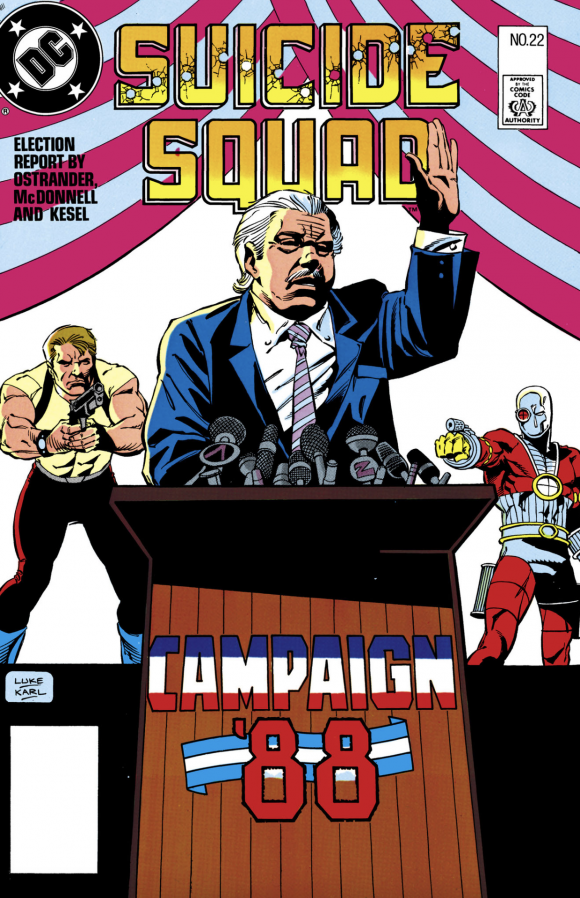
—
10. Deadshot #4: Astride a Grave. From the beginning of the series, Deadshot has been, like Charles Bronson’s Joe Wladislaw in The Dirty Dozen, the even-keeled, hyper-competent killer. But upon ditching the Squad in #9 on this list, he stars in a mini-series so dark I needed infrared goggles to read it.
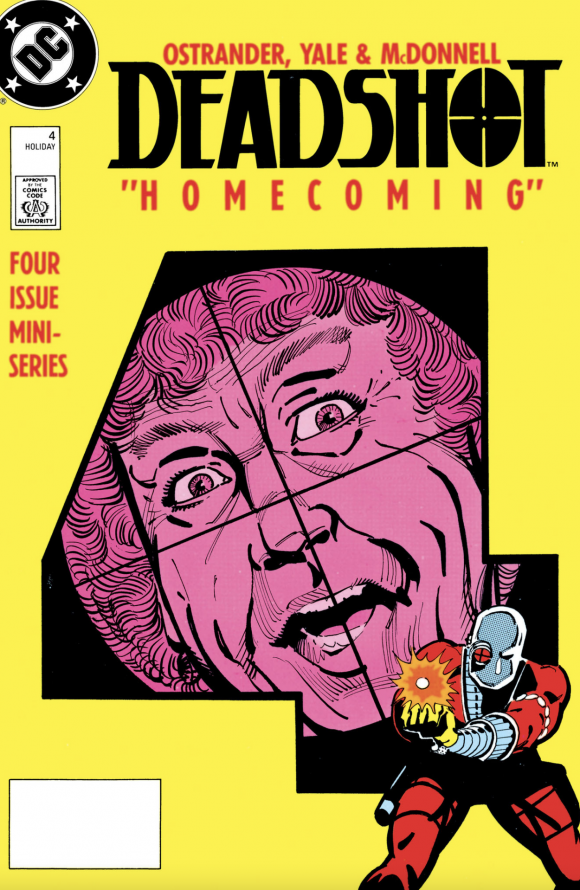
Newsflash: Deadshot is extremely messed up! Assuming I have this right, his mom hired his brother to kill his father and he killed his brother trying to stop him (by accident). Now, in the present, Mom hires a pedophile to kidnap Deadshot’s kid to lure him back for revenge. Deadshot kills the child molester, then finds his mom and cripples her in front of his Belle Reve therapist.
Comics! They’re not just for kids anymore!
Nevertheless, I found this story super-compelling, so maybe I’m the one who needs therapy. Ostrander is joined by wife Kim Yale as co-writer for this mini and she stays on as Squad co-scribe pretty much for the remainder of the run, and does a terrific job. Luke McDonnell’s art here is some of his best across the entire Squad family of books.
—
11. Suicide Squad #27: Janus Directive: Scattermove. I was perplexed by why John Cena’s Peacemaker was getting so much airplay in The Suicide Squad until I read this eleven-part crossover, a phrase I greet with the same enthusiasm as “reoccurring gonorrhea.” (Couldn’t spring for an even dozen, huh, DC?)
Basically, Kobra has gotten the secret organizations from a lot of mid-list DC books to think one has turned on the others, so they all fight. Peacemaker, who is contractually obligated to spout his catchphrase “I love peace so much I’ll kill for it” once per appearance, is affiliated with Checkmate, the spy agency under Task Force X, and, by crossover-association, the Squad.
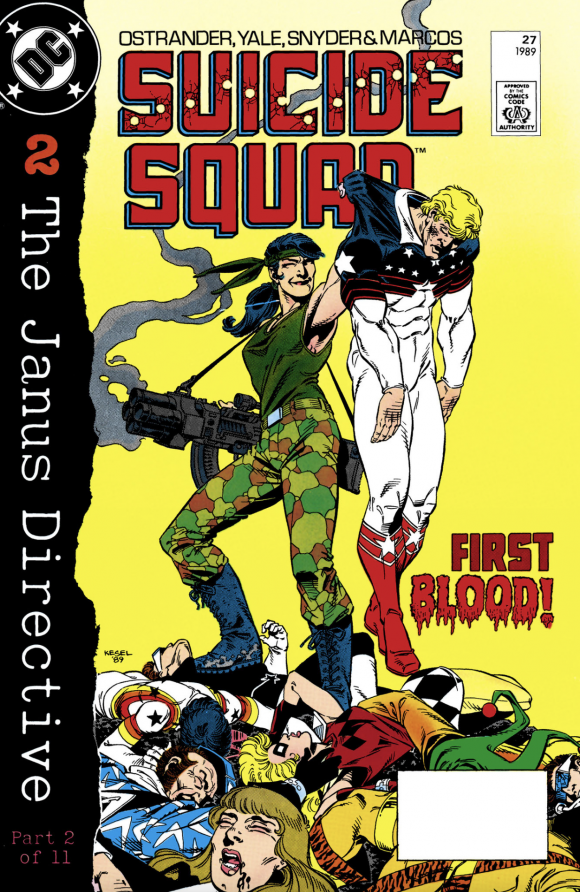
As part of this convoluted intrigue, Bronze Tiger, the strong-but-silent Robert “Napoleon” Jefferson (Jim Brown) of the Suiciders, leads a motlier-than-usual Squad to attack perennial Outsiders punching bags the Force of July, accidentally killing many of them in a brutal fight. After getting his ass repeatedly handed to him by the New Teen Titans, first-time Squadder Dr. Light has developed a pathological fear of children, which I found extremely hilarious for some reason.
Post-Janus Directive (if not during), the book comes down with a serious case of The Nineties (even though it’s still 1989). Teeth-clenching and “dark” storylines dominate — like the one where Waller and her crew straight up murder a bunch of New Orleans voodoo mobsters. For the most part, though, the story arcs remain solid to the very end, no mean feat.
—
12. Suicide Squad #34: Armagetto. In the third issue of the series, the Female Furies attacked Belle Reve to bust out Glorious Godfrey, imprisoned since Legends. In a long-running storyline apparently suggested by inker Karl Kesel, Lashina gets left behind and she joins the Squad under the identity of the Rambo-esque “Duchess.”

For many issues I had no idea what the point of this B-Plot was until here; finally, she kidnaps much of the Squad and takes them to Apokolips to beat the crap out of DeSaad’s sister and wrest back control of the Furies. It is completely bonkers and I love it, particularly the Amanda Waller vs. Granny Goodness throwdown promised on the cover.
—
13. Suicide Squad #46: Choice of Evils. In speaking of dubious storylines that actually kind of pay off, remember when Ray Palmer appeared to die and a new Atom showed up with a costume that looked like the ’90s threw up on him but no one was sure if this was Palmer in disguise or some other guy with shrinking powers?
Me neither. Anyway, that’s who’s on the cover.
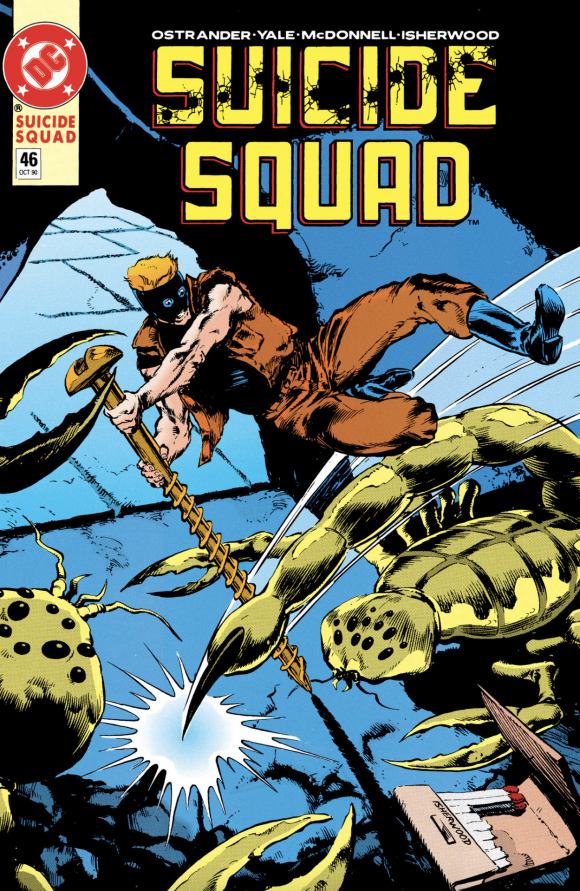
Also file under there’s-no-way-they’d-get-away-with-this-today: The Squad invades Jerusalem to bust out Kobra for reasons too complicated to get into here. The Mossad’s own super-team tries to stop them. Unfortunately for everyone, Dybbuk, the Israeli superteam’s A.I., has had its cyber-mind poisoned by Kobra and decides to attack the Dome of the Rock and usher in an era of chaos just as the Faux-Atom infiltrates Kobra’s cell. Pure super-espionage insanity ensues. Talk about going out with a bang!
—
MORE From FRED VAN LENTE
— COMIC BOOK DEATH MATCH: New Teen Titans vs. Uncanny X-Men. Click here.
— The TOP 13 Mike W. Barr BATMAN Stories — RANKED. Click here.

August 2, 2021
These are excellent choices; of course, the whole run is great. Just wanted to shout out the awesome logo too.